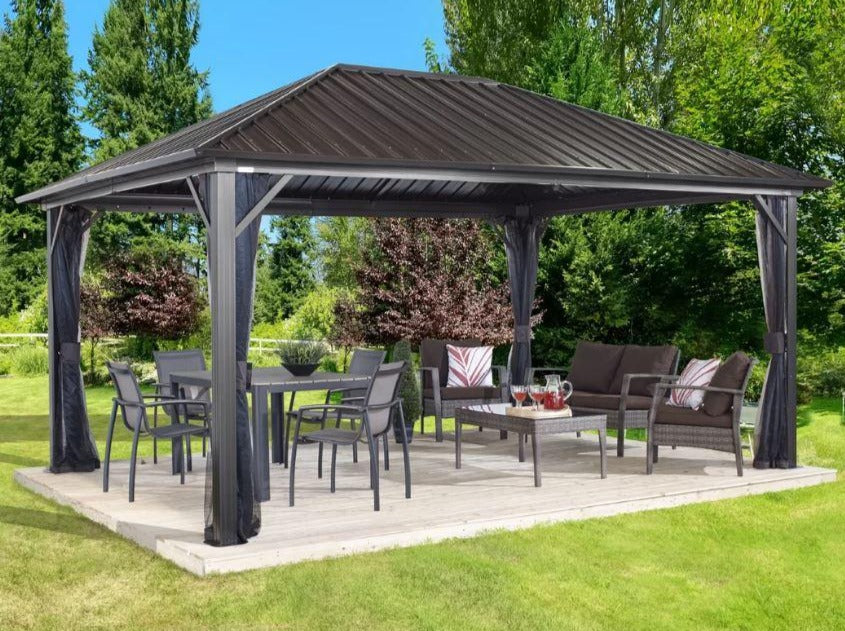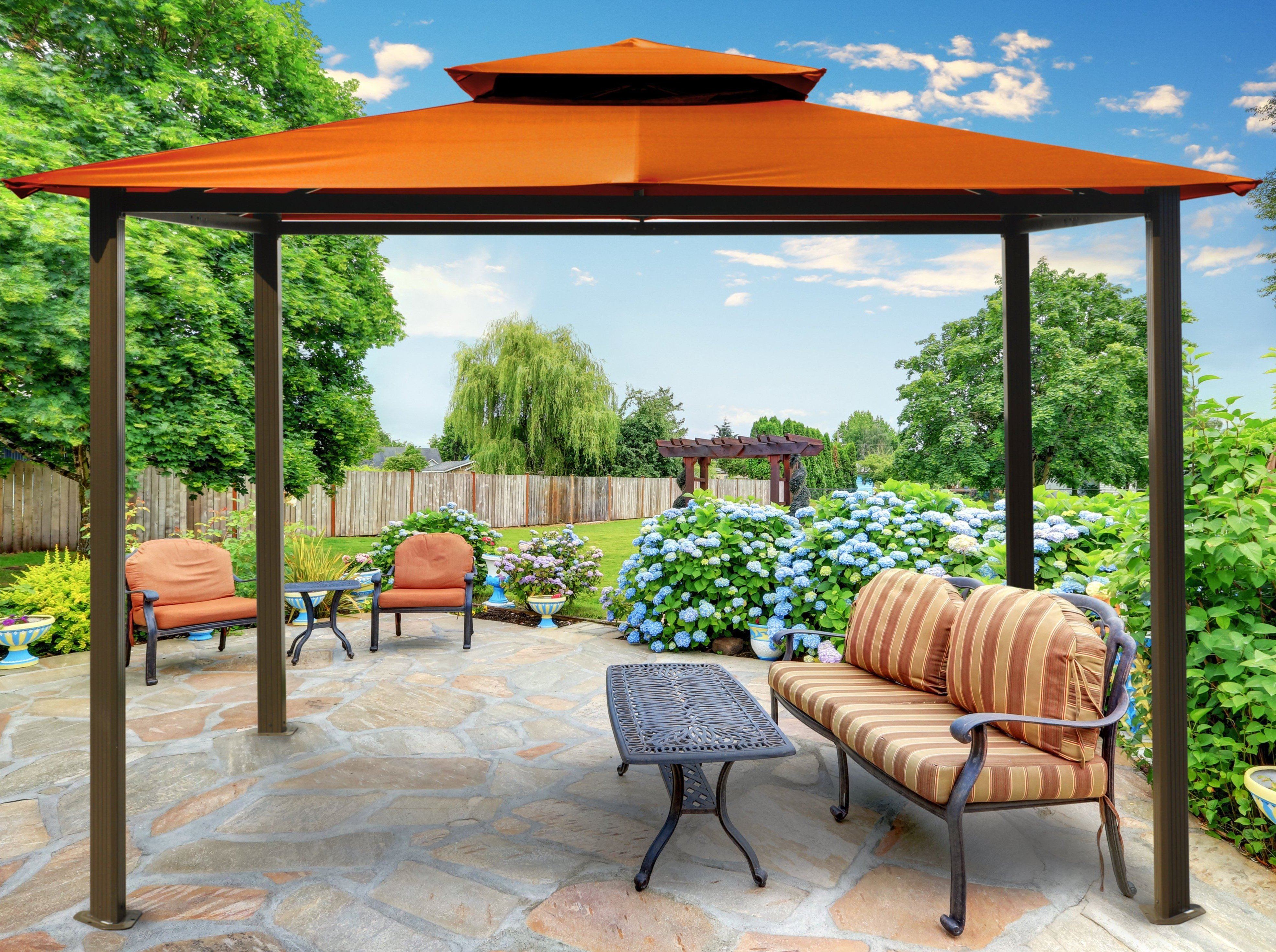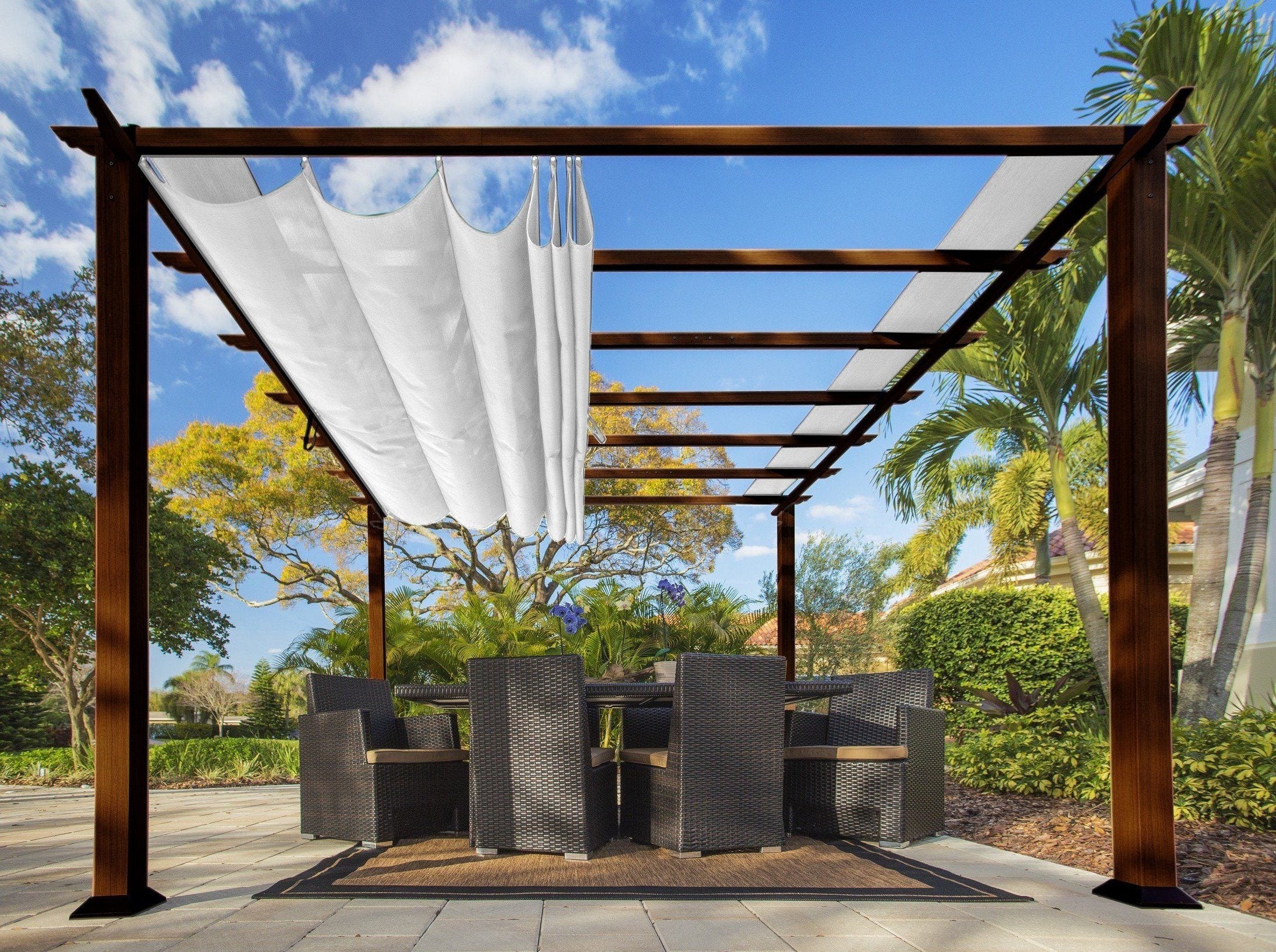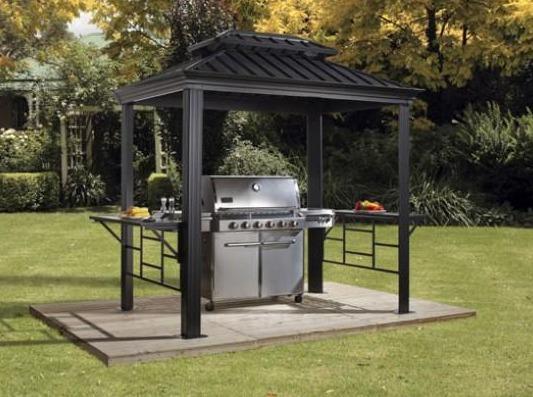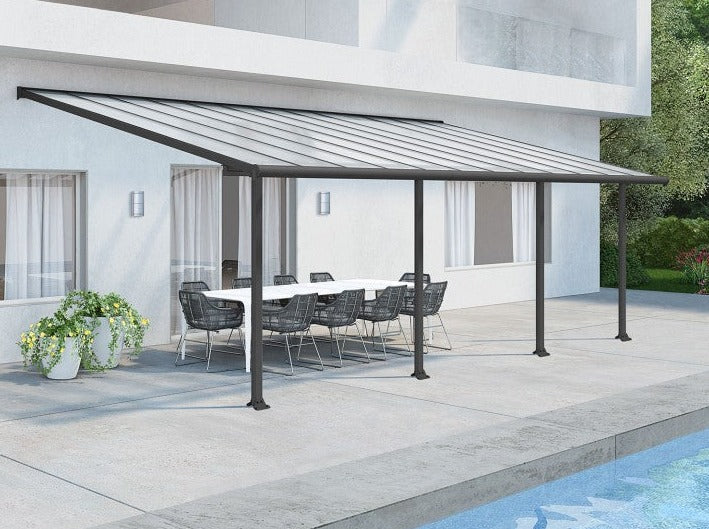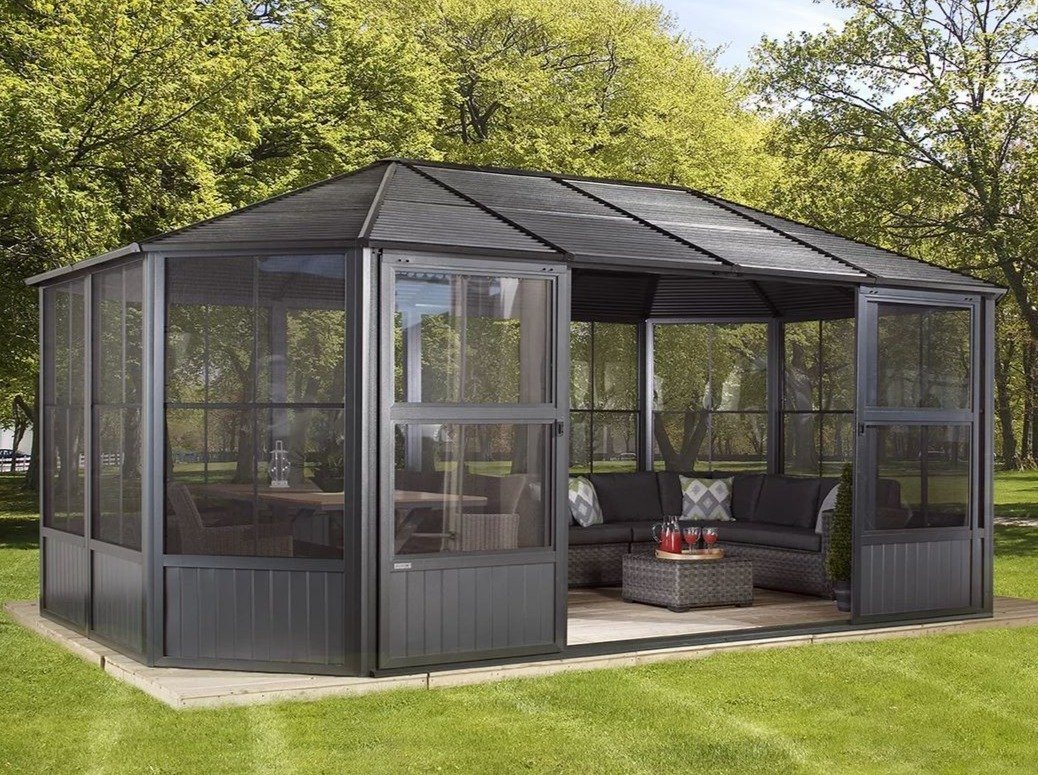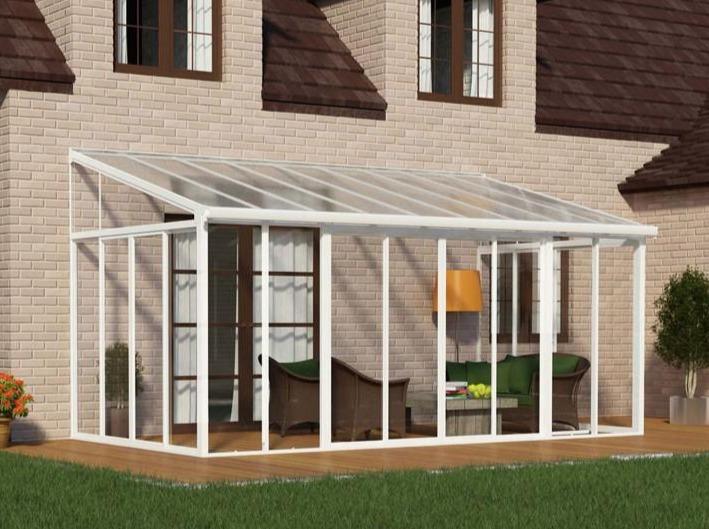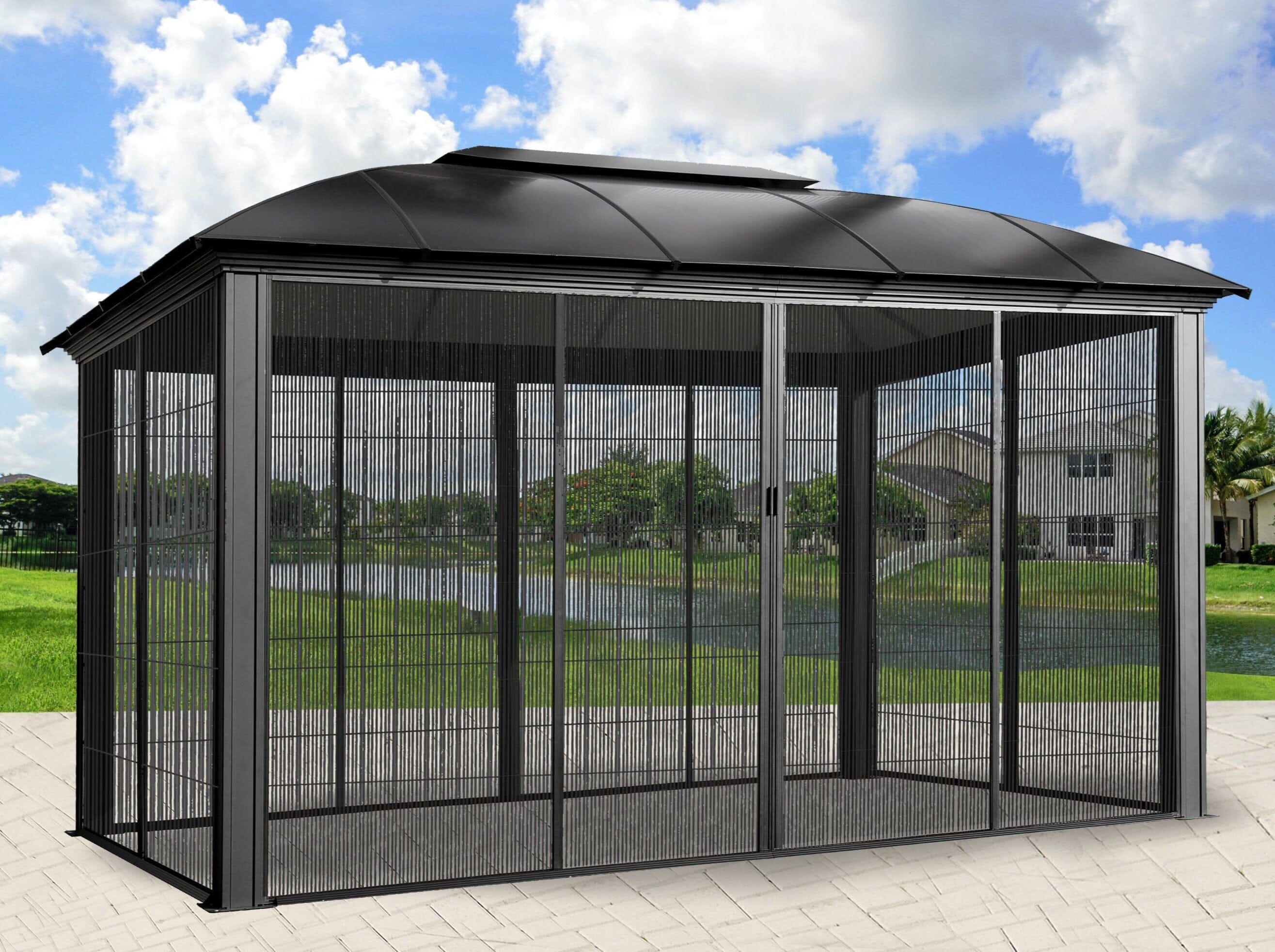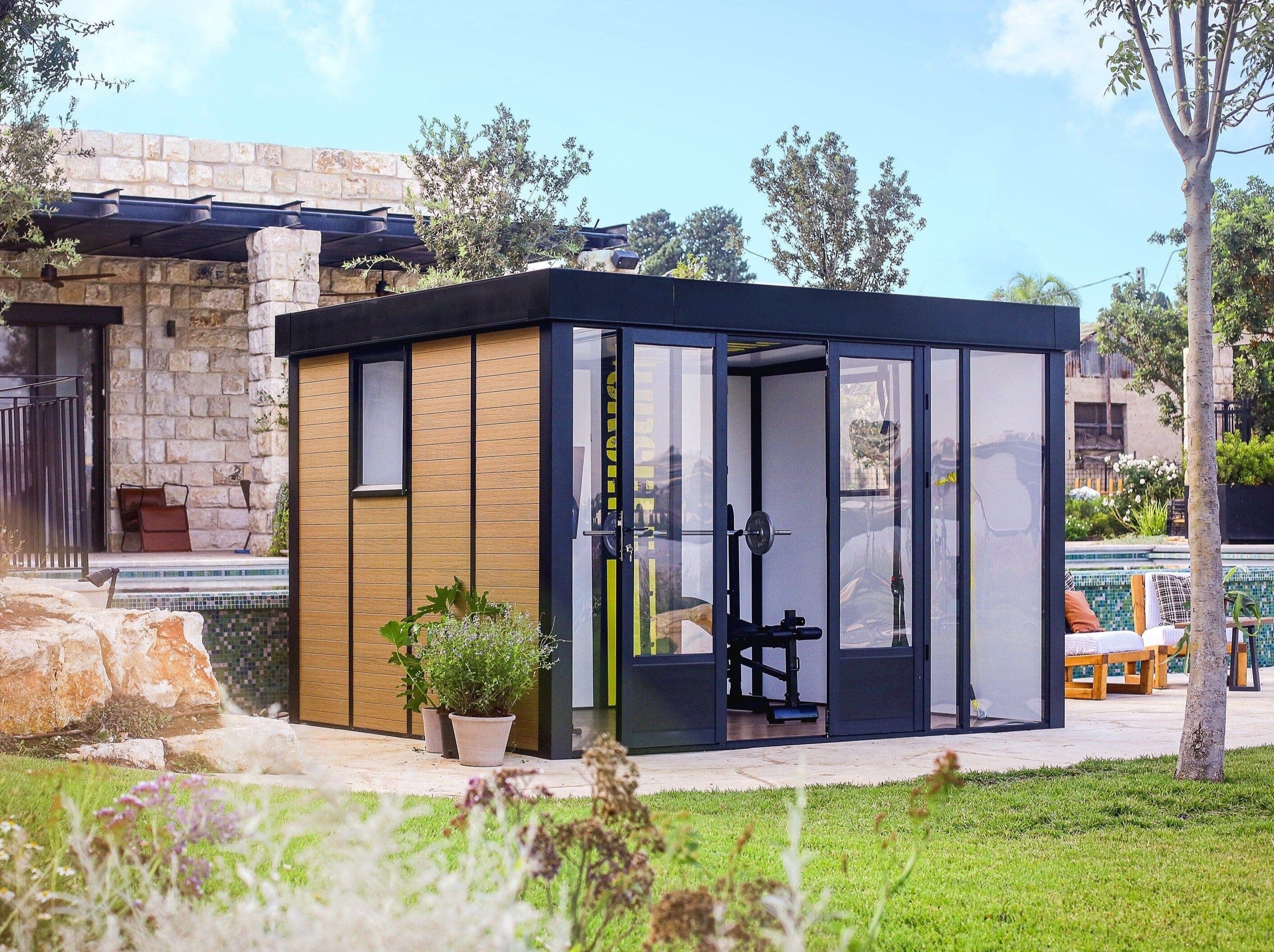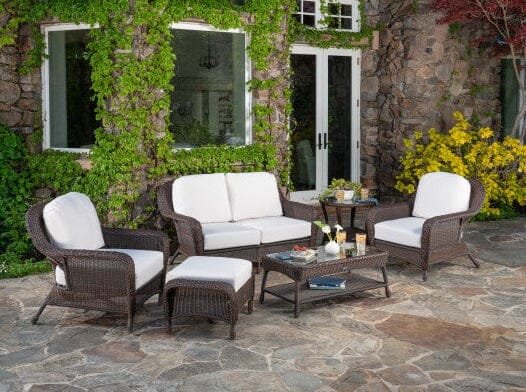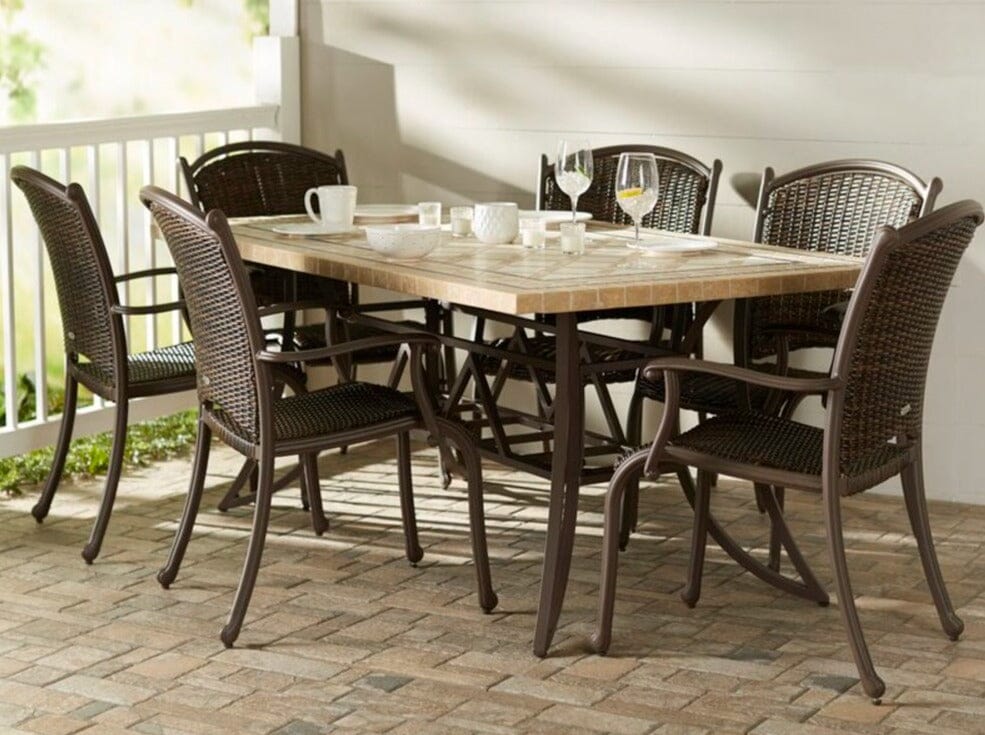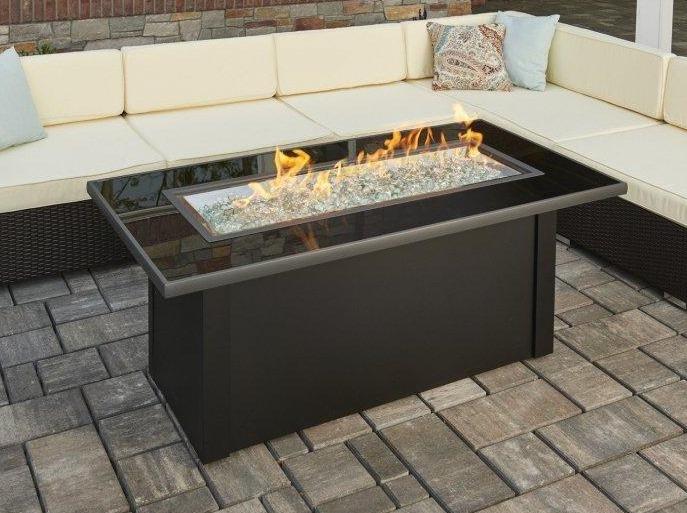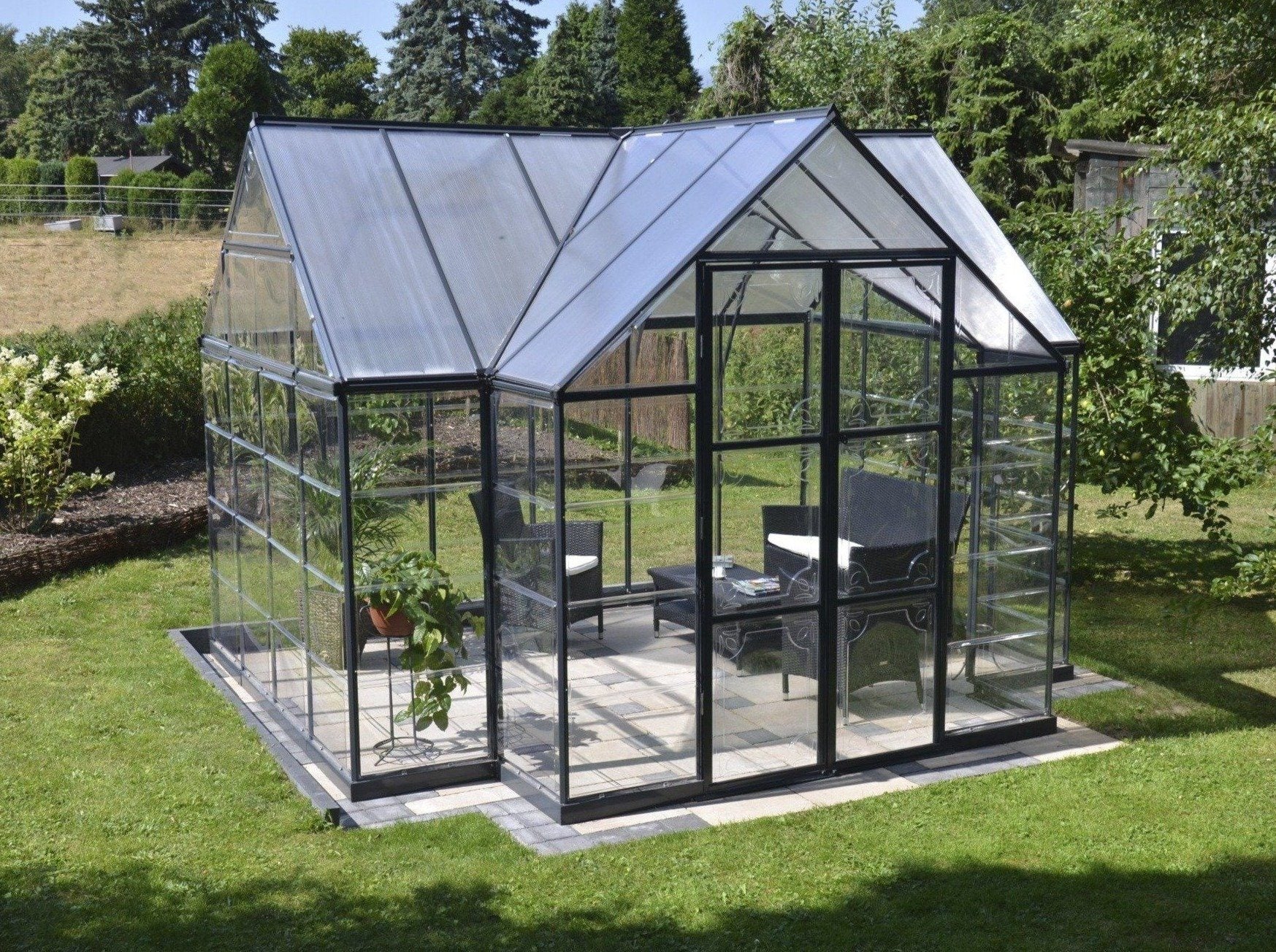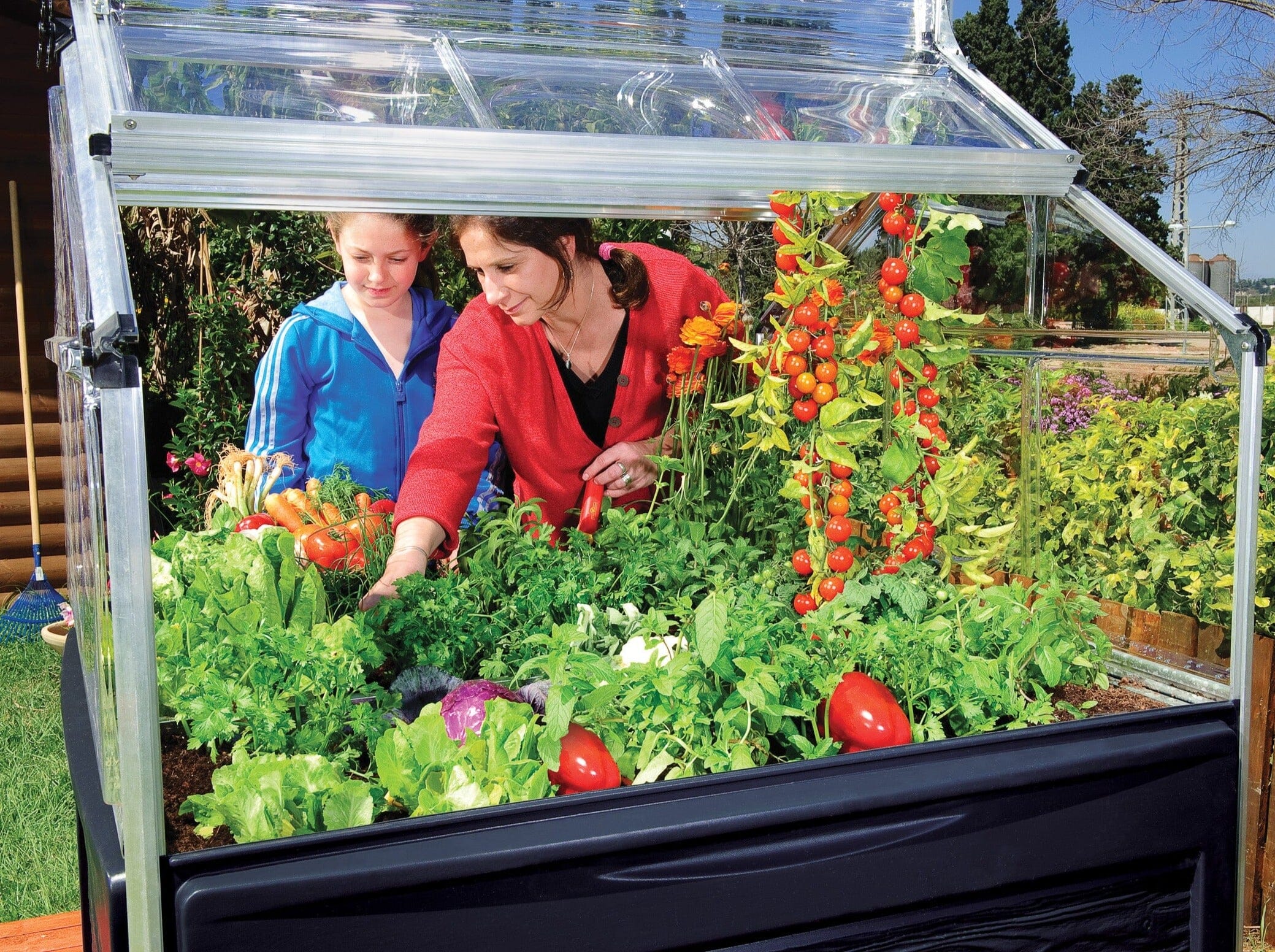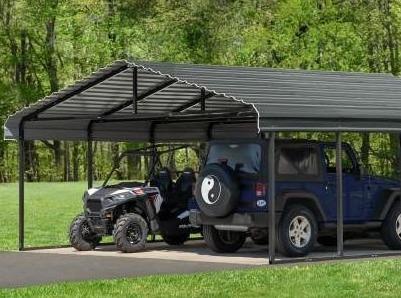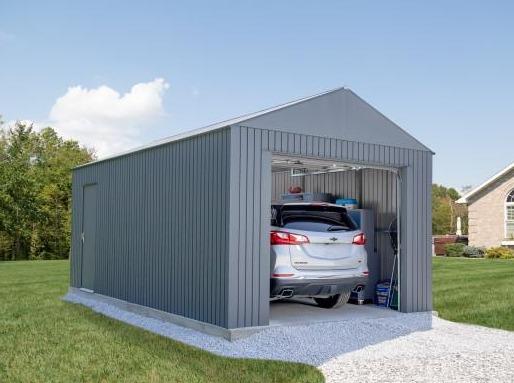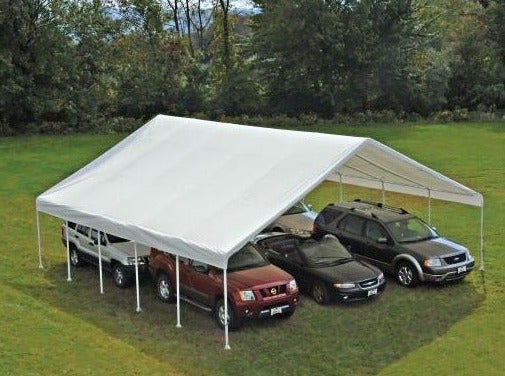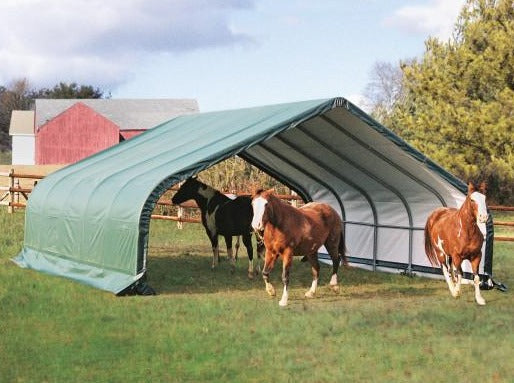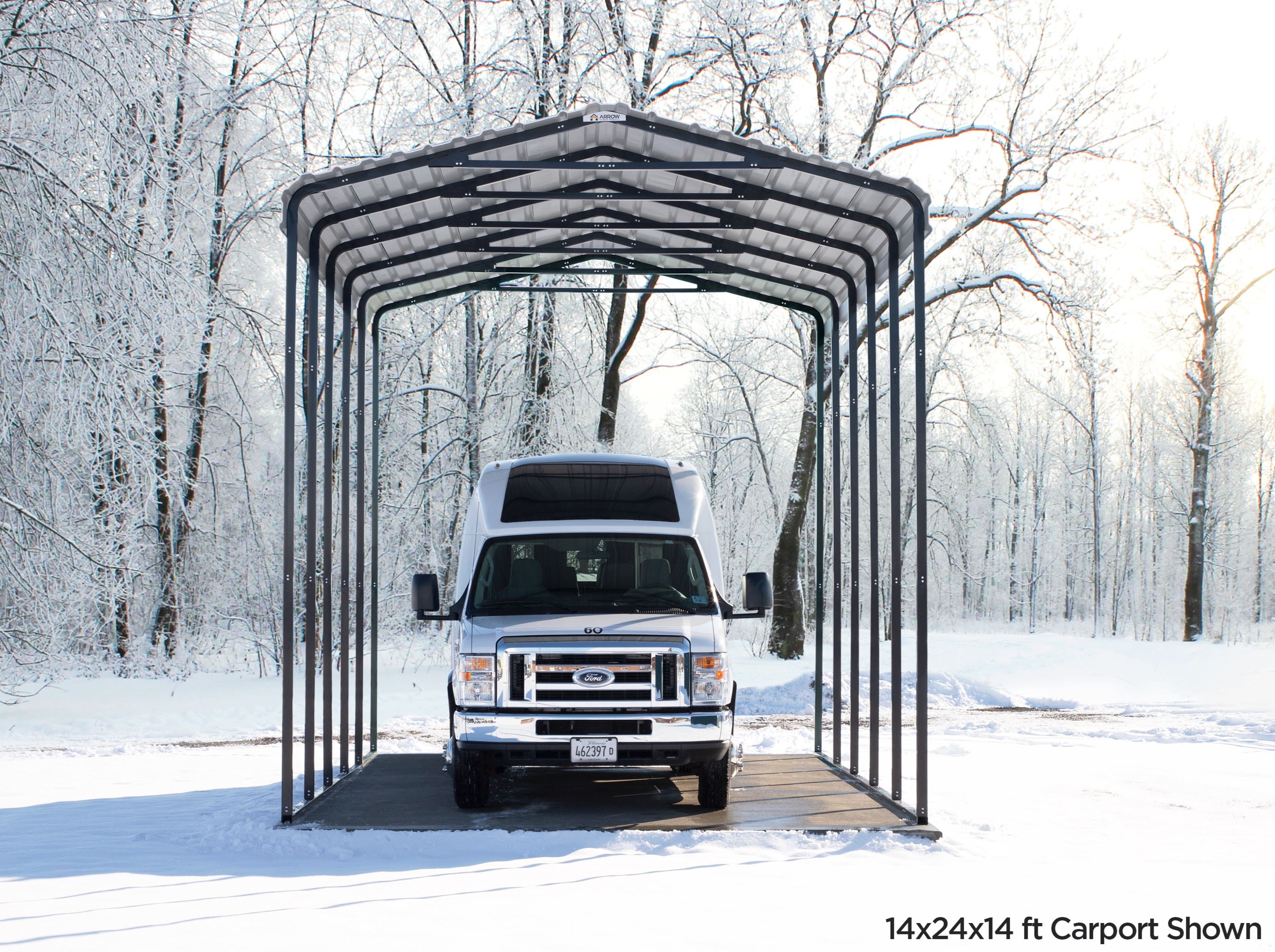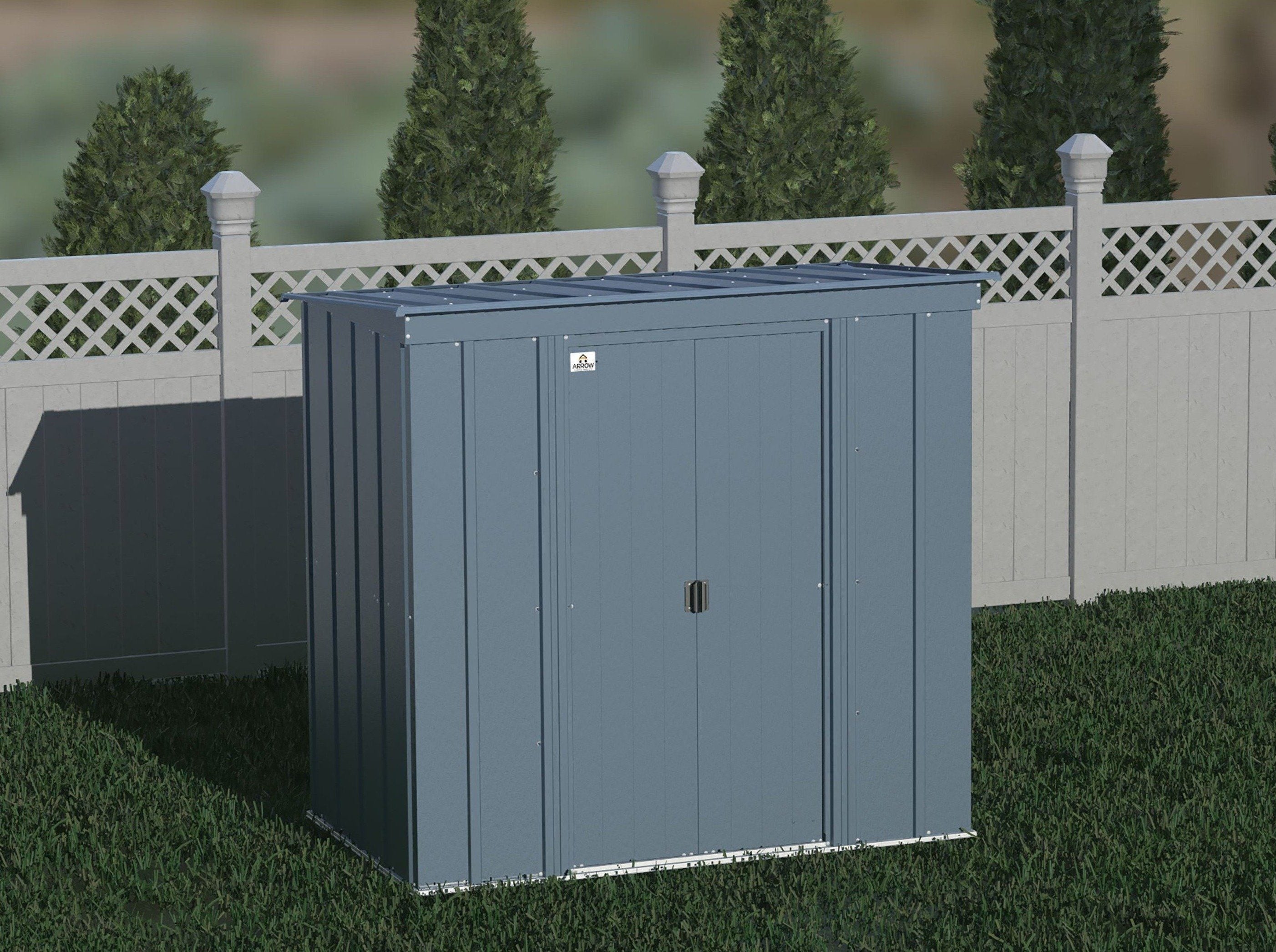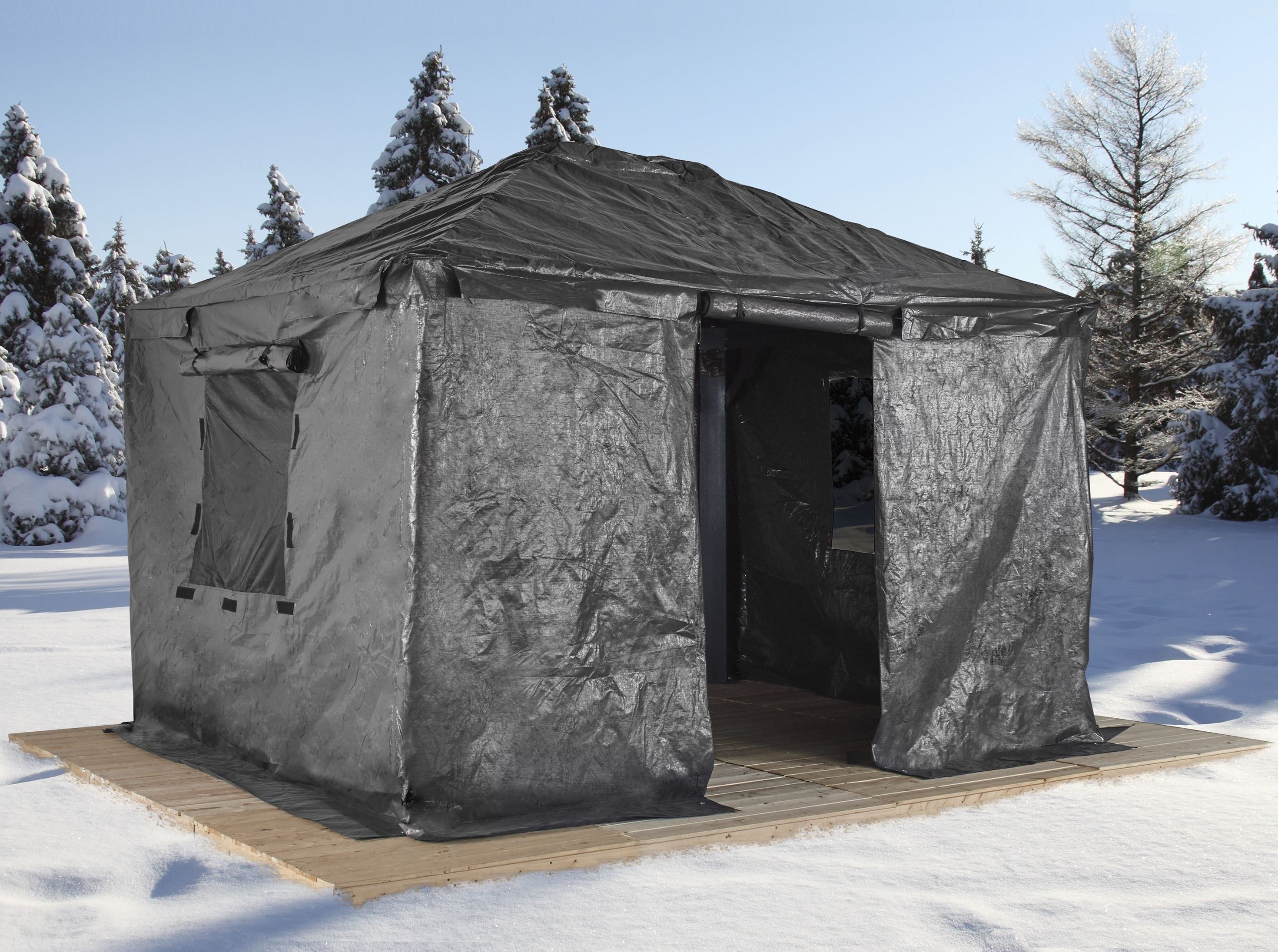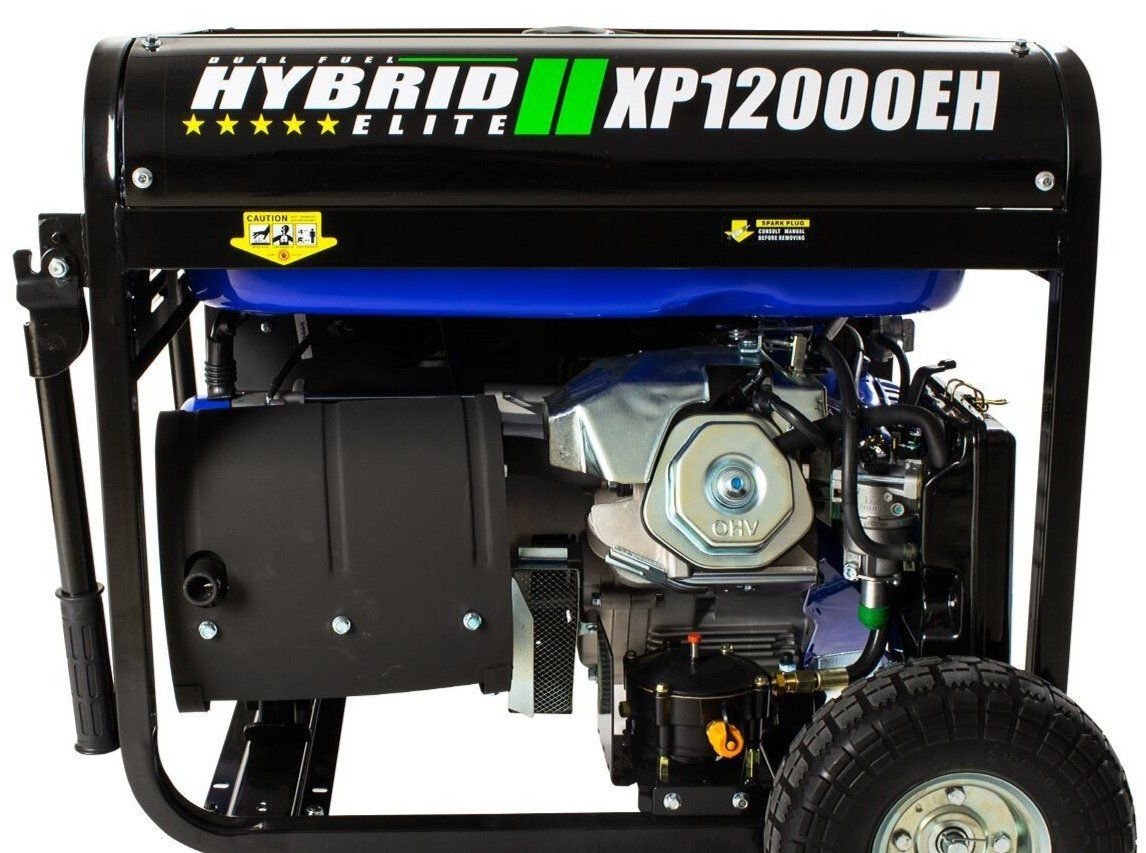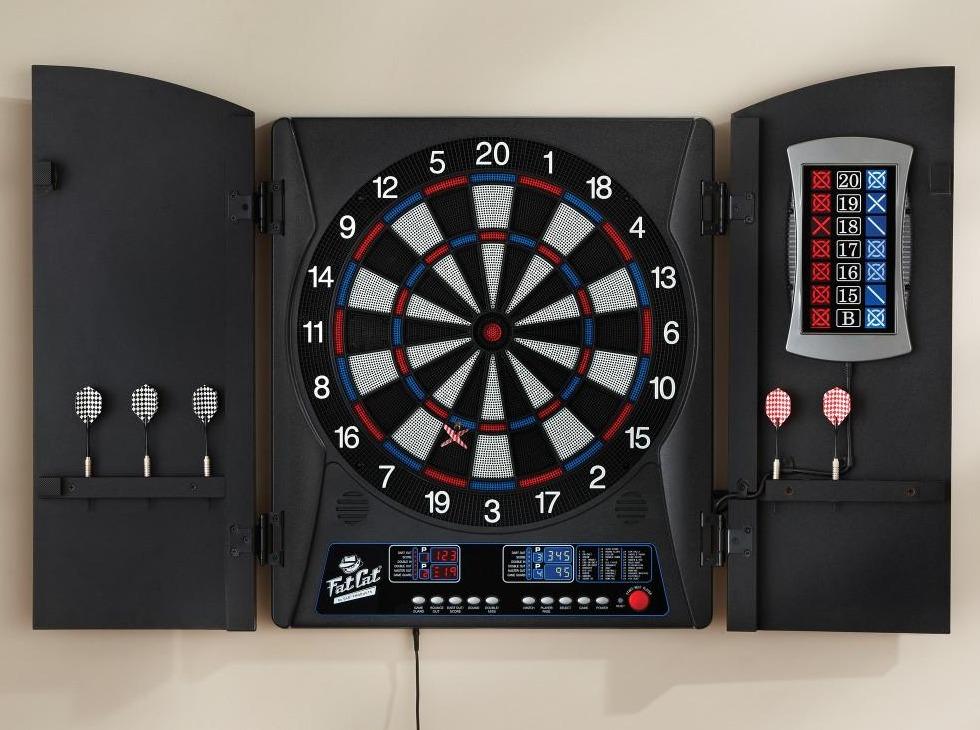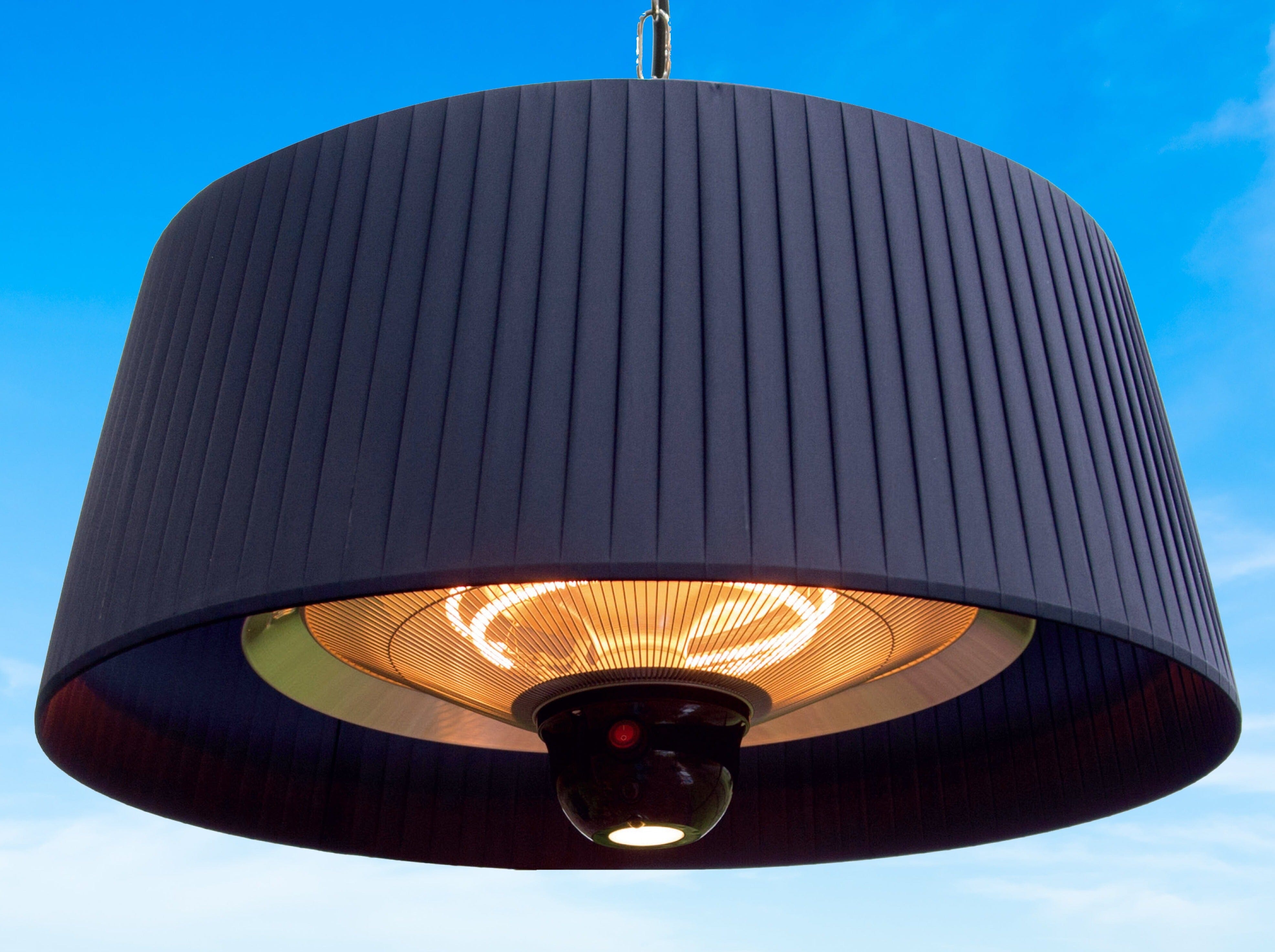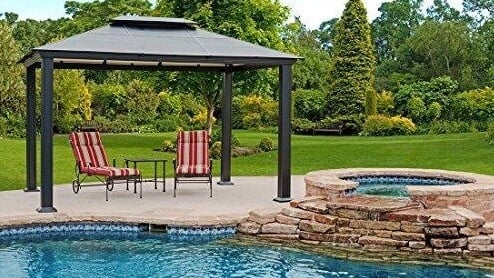Gazebo vs. Pergola: The Ultimate Guide
As people look for ways to make their homes more livable while enhancing property values, backyard improvements are becoming increasingly popular. Homeowners are turning to traditional and innovative ways to extend their indoor living spaces to the outdoors, specifically to their backyards and patios. As a result, backyard structures like gazebos and pergolas are popping up in outdoor spaces across the country.
Gazebos and pergolas are different from each other. Overhead, gazebos have solid, fixed roofs while pergolas have only cross-beams on top. Pergolas have the simplest construction consisting of posts and beams, while gazebos can be imposing, stand-alone structures.
Deciding that you want to enhance your outdoor living experience but not knowing what type of structure to choose can be frustrating. In this article, we highlight the key attributes of gazebos and pergolas and see that while some differences are obvious, others are more subtle but important nonetheless.
Structural Comparison of Gazebos and Pergolas
Gazebos and pergolas are often confused with each other, and the terms are frequently (and mistakenly) used interchangeably. While their function and appearance do bear some similarities, they each have distinct characteristics as far as design, construction, and purpose.
To better understand their differences, the best place to start is with a structural comparison, as this aspect ties into their function and aesthetic value as well.
What is a Gazebo?
A gazebo is an outdoor structure consisting of pillars or posts that support a solid roof. The classic gazebo design is hexagonal (six-sided) or octagonal (eight-sided). However, gazebos can also be round, square, or even rectangular. As the poster child for outdoor structures, the archetypal gazebo features wood construction with a gleaming white paint job and a spired, pitched roof.
As far as other signature features, a fence-type railing is often built around the circumference of the structure, which can be built on a concrete pad or flat patch of ground. For the roof, there is usually a modest overhang, and the classic gazebo roof has wood shingles and a rather significant pitch or slope, with an ornamental object (i.e., weather vane or spire) at the point of the roof.
Gazebo platforms (e.g., the floors) are often elevated above ground with an entry made via a short staircase. Traditional gazebos are constructed from wood and are very sturdy structures. More modern materials like vinyl and aluminum are also used for practical reasons like weatherproofing, ease of installation, and cost. As far as size, gazebos can be small enough to fit in a modest backyard or large enough to accommodate a full-sized orchestra. (Source: Country Lane Gazebos)
In public gathering spaces, such as parks and outdoor venues, large gazebos can serve as stages for speaking events and even grandstands for performances. Particularly during the warmer months of the year, gazebos in public spaces see a high level of activity on a daily or nightly basis, such as local school band performances and political rallies.
$2,735.80
Expand your outdoor living space with the 11 x 13 Meridian Gazebo by Yardistry. Made with 100% Cedar lumber, and finished with a natural cedar stain, the 11 x 13 Meridian Gazebo will bring warmth and character to any space.… Read MoreYardistry 11 x 13 Meridian Gazebo 100% Cedar with Graphite Aluminum Roof

What is a Pergola?
Like a gazebo, a pergola is a common outdoor structure found in the backyards and patios of homes from coast to coast. One of the main distinguishing differences between a pergola and gazebo is that a pergola does not have a solid, fixed roof. Instead, a framework of beams and slats is supported from underneath by posts that are either driven into the ground or attached to concrete footings for stability.
With its simpler construction, a pergola can be small enough to cover an outdoor hot tub or large enough to span an entire walkway between buildings. What truly sets pergolas apart from gazebos is that they, by design, only provide partial or filtered shade. With overhead construction consisting of beams and slats and sometimes lattices, pergolas are not intended to provide complete shade. That being said, may pergolas have adjustable louvers so that the amount of light can be adjusted.
Pergolas often have climbing vines or vegetation growing up the posts and along the network of horizontal beams and slats that form the “roof.” As the plants grow denser, the amount of sunlight filtration increases. However, the abundance of natural light is one of the appealing features of pergolas, and their proponents welcome the natural mix of shade and sunlight.
(Source: Canadian Home Trends Magazine)
$2,099.80
Extend your outdoor living space with the Madison Pergola and bring indoor living outside. The Madison Pergola adds character to any area creating the perfect setting for all your outdoor entertainment needs. The unique design includes a bar and counter… Read MoreYardistry 14 x 10 Madison Pergola with Sunshade & Bar Counter

$2,499.00
Structural Comparison Recap
It can be difficult to remember the different features of gazebos and pergolas and to keep track of which structure has which attributes. Here is a handy table of features to make this task easier:
Functional Comparison of Gazebos and Pergolas
From a functional perspective, gazebos and pergolas are comparable (if not identical) in some respects and quite different in others. While the charm and beauty of many outdoor structures cannot be denied, it is their functionality that makes them worthwhile investments for home and property owners.
When it comes to purpose and function, there are several categories worth considering, with each one alone worthy enough to heavily influence the decision as to which structure is best suited for a particular location. Here is how gazebos and pergolas stack up against each other:
Shade
With solid roofs, gazebos can provide a good amount of shade, particularly when the sun is directly overhead. And because they have no walls, air moves freely within them, thus creating a pleasant, well-ventilated area within which to sit, eat, and relax. Depending on the amount of overhang or the length of the eaves, the roofs of gazebos may even offer sufficient shade in the morning or late afternoon hours.
Pergolas, on the other hand, can offer only limited shade at best. Because of the open nature of the beam and slat structure overhead, pergolas may offer some shade when the sun is at certain angles in the sky, and almost none (unless substantial vegetation is growing on top) when the sun is directly overhead. The beams and slats can be set at an angle to enhance a pergola’s shading ability, but the amount of shade will never equal that of a solid roof.
While pergolas offer limited protection from the sun (i.e., filtered shade), they also bathe occupants below with abundant natural light. By the same token, because of their impenetrable roofs, spaces inside gazebos can be immersed in enough darkness that could hinder or diminish certain activities, like reading a book in the late afternoon.
$860.80
Looking to escape reality a bit with a good book, entertaining guests, or take a break from the summer sun? The Kingsbury Gazebo is a sure bet to sweep you away into a mist of relaxation while making you feel… Read MoreParagon 11x14 Kingsbury Grey Roof Top Gazebo with Optional Curtains & Netting

$1,199.80
Shelter
The benefits of gazebos are not just enjoyed during warm summer months. The same roof structure that provides shade can also protect occupants from inclement weather, such as rain. Gazebos can provide a safe harbor during a rain shower so that outdoor fun does not have to come to an end simply because of some raindrops.
Because none of these structures have solid walls, however, they would not offer much protection against gusty winds or wind-driven rain, even with insect screens or curtains drawn.
Views
One of the biggest perks of gazebos and pergolas is the near 360-degree views they afford of the outdoors. These outdoor structures allow occupants to be a part of the natural surroundings with no barriers in between. The sights, sounds, and smells of the great outdoors can be enjoyed to their fullest.
With year-round protection from sun or rain, gazebos enhance the outdoor experience, transforming a backyard into a true extension of the home by providing rustic living spaces from which to enjoy all the natural benefits of outdoor living. Similarly, pergolas blend into their surroundings with natural light coming not only from all around but from above as well.
Adaptability
When it comes to adaptability to their surroundings, pergolas have the edge over gazebos. Even the most modest of gazebos have limitations for suitable locations due to their breadth and height. For instance, installing either of these structures immediately adjacent to your house would not be feasible, nor would situating one on a slope or unstable ground be advisable.
In contrast, pergolas can be stand-alone structures built away from a residence, or incorporated seamlessly with the exterior wall of a house and installed over a patio. When combined with climbing vines or vegetation, pergolas can truly enhance the visual appeal of outdoor space. Also, many after-market features like retractable canvas awnings can transform pergolas into more intimate settings.
Aesthetic Comparison of Gazebos and Pergolas
Aside from their practical uses, gazebos and pergolas are often installed for their aesthetic value as well. Installation of these outdoor structures can instantly change the look, ambiance, and mood of a backyard or patio space. While specific designs can be customized to fit the surroundings, here are some thoughts comparing the aesthetic qualities of gazebos and pergolas based on their classic attributes:
Gazebos
With their classic design and construction, gazebos may be the most traditional of outdoor architecture. They also may have the longest history, as gazebos have been around for millennia, with origins purportedly dating back to the days of the ancient Egyptians, who adorned their gardens with them.
Throughout history, gazebos have been used as a place of refuge, solitude, and calm – an escape pod from the hustle and bustle of everyday life. Popularized in Asia and Europe during the 18th century, the design of gazebos became more intricate and ornate, and in the eyes of many, were perceived as status symbols.
With their distinct roof lines, many of which are adorned with cupolas (small structures that protrude from rooftops), gazebos create a sense of warmth and serenity in an outdoor space. (Source: Lancaster Barns)
$909.80
The Meridien Gazebo and sun shelter is an attractive mix of classic and modern design. Constructed from a powder-coated aluminum frame, this top-of-the-line gazebo is designed for all-year usage and is great for creating an outdoor living space in any backyard. Featuring a… Read MoreSojag Meridien Gazebo with Brown-Tinted Roof Panels and Mosquito Netting

$1,179.99
Pergolas
Pergolas also have origins that can be traced back to ancient Egyptian times, but they truly rose to prominence during the Italian Renaissance period when their aesthetic value was recognized. Pergolas have an understated simplicity with their post-to-beam construction. The common practice of adding climbing vines adds to their allure as essential garden pieces.
When it comes to form over function, pergolas appeal to those for whom aesthetics in the outdoors are just as important as practical benefits. Pergolas are intended to blend in with their surroundings and to become natural extensions of whatever buildings they may adjoin. (Source: Infinity Canopy)
$1,579.80
This beautifully designed Florence 11x11 Pergola with a convertible canopy can be manually opened and closed to allow just the right amount of sunshine to come in. Perfect for stargazing in the evening too. The frame looks like real wood due to… Read MoreParagon 11x11 Florence Pergola with Aluminum Canadian Cedar Finish & Beach White Canopy

$1,699.99
Choosing the Right Structure for Your Outdoor Space
Making the right outdoor structure choice for your property is about balancing the various factors, and giving more weight to the ones that matter the most to you.
Putting everything together, here are some key considerations when choosing between a gazebo and a pergola for your outdoor space:
-
Aesthetics – The right outdoor structure for your property can set the mood and ambiance that you seek to create for your outdoor space.
-
Purpose – Knowing what you want out of an outdoor structure is half the battle when it comes to making an informed decision. This means knowing the activities you intend to do in or beneath the structure.
Do you want full shade underneath? Is rain protection important? Do you want to transform the structure into an outdoor living room complete with a TV and other electronics? Will you be entertaining guests in it?
-
Time of day – It is important to consider not only how you intend to use the outdoor structure, but also when you intend to use it. For instance, if you have an aversion to direct sunlight, then a pergola may not be the right choice for you, as you will constantly be adjusting your position or your plans depending on the position of the sun in the sky.
-
Season of primary use – Perhaps you intend to use the outdoor structure extensively during the summer months; therefore, you need the most bang for your buck by having a versatile structure with a solid roof. If spring is when you spend the most time outdoors tending to your garden, then a pergola may be the right choice.
-
Local weather and climate – Depending on where you live, local weather and climate of your region may impact your outdoor structure decision heavily. A person living in the wet and rainy Pacific Northwest may consider different types of structures than someone who resides in the balmy Arizona desert or a Floridian looking to enhance their backyard space in Orlando.
-
Capacity – The number of people that will be enjoying your new outdoor digs is also an important consideration as it will influence the type and size of the structure. A gazebo with benches along its perimeter and furniture arranged in the middle can comfortably accommodate a surprisingly large group.
One calculation method calls for allocating two feet per person where benches are present, and three square feet per person standing room. If a gazebo measures around 8 to 9 feet across (assuming it is round or octagonal), then you would have roughly 63 square feet to work with, which translates to comfortable standing room for just over 20 people. That is a lot of space for a modest size gazebo.
(Source: The Carriage Shed)
Important Considerations Before Installing any Outdoor Structure
While the prospect of dramatically improving the functionality and aesthetics of an outdoor space while potentially enhancing property value is enough to make anyone jump up and get the ball rolling on installing an outdoor structure right away, there are some important things to consider beforehand.
With a bit of research and careful planning, you can avoid running into problems that can bring your outdoor project to a screeching halt. Here are a few important considerations:
-
Is a building permit required? Depending on the type and size of the structure you want to install in your outdoor space, you may need to get your local authorities involved. Certain towns, cities, or counties require that certain improvements, even outdoors on private property, have proper permits issued before construction.
This would be especially applicable for larger gazebos with correspondingly larger, heavier roofs that must be properly supported. Depending on just how large the planned structure is, a concrete pad or embedded footings may be required to make the gazebo structurally sound. This would certainly come into play in areas where earthquakes or high winds are more than rare occurrences.
(Source: Cedar Shed)
-
Are you choosing self-installation or professional assembly? If you are planning to have your outdoor structure professionally installed for you, then the installation charge (labor and materials) will have to be included in your overall budget.
If you are taking on the project yourself, then you will be investing your time rather than money. Unless you have worked on similar types of projects before or you are one of those rare people for whom the completion of major DIY projects comes naturally and easily, then be prepared for mistakes to be made and more money to be spent.
Fortunately, many gazebos and pergolas are sold in ready-to-assemble kits that are designed to be put together by do-it-yourselfers. The sizes of these pre-fab structures tend to be on the smaller size, and the materials are also lighter (i.e., vinyl or aluminum). But again, they are designed to be assembled by a small team of amateurs.
(Source: DIY Network)
-
Will the structure be temporary or permanent? Another important, albeit potentially brief, consideration is whether your outdoor structure will be temporary or permanent. If you are looking to add a permanent feature to your backyard or patio, then you can consider larger, more elaborate structures with heavier, longer-lasting materials like hardwood. Cedar is a great choice, as it is durable and contains natural preservatives that help it resist insects and decay.
On the other hand, if you know that ultimately, what you want on that certain patch of backyard space is a swimming pool or a guesthouse, then perhaps the best route until that plan comes to fruition is a smaller, lighter structure assembled from a kit so that when the time comes, it can be easily dismantled and even re-located to another spot.
-
Are there weather-related concerns? Depending on where you reside, Mother Nature may limit the size and type of structure you can install in your outdoor space. For instance, if you live in earthquake country like California, you may want to consider a structure with thicker posts and an overall stronger construction. The structure itself may need to be anchored to the ground or built on a concrete foundation as well.
Areas in Texas and Oklahoma are known for their persistent howling winds (and, unfortunately, the occasional tornado), which may dictate the type of roof on your gazebo. In this case, choose something strong and durable with a high wind rating, like cedar. And in the Pacific Northwest, where there is a significant amount of rainfall, using any materials that easily rust or rot would be out of the question.
Then, there are parts of the country that, while full of idyllic scenery in the spring, summer, and fall, receive heavy snowfall in the winter, which could cause a poorly constructed structure to collapse under the weight of accumulating snow. Regardless of the construction, it is important to never allow snow to accumulate on top of the structure.
-
Can you handle the maintenance? If you are willing to commit to the installation of a new structure in your backyard or patio, then you should be prepared to perform routine maintenance on it, regardless of its size or shape. Proper maintenance is essential to the safety and longevity of any outdoor structure. After all, you and your loved ones will be enjoying the great outdoors underneath it.
For gazebos, this may mean keeping the roof clear of accumulating debris like fallen leaves or snow. In the case of pergolas, routine maintenance can include regular pruning and trimming of vegetation growing on posts, beams, and slats to prevent overgrowth, which may weigh down and strain the structure’s integrity. Some products are constructed of vinyl, which is long-lasting and virtually maintenence-free.
-
How much space do you need? The amount of outdoor space that will be allocated to an outdoor structure will heavily influence the type. For instance, gazebos in the classic round or octagonal shape can range from 8 feet across to 50 feet across. In comparison, rectangular gazebos can occupy an area measuring 10’ by 12’ (120 square feet) up to 20’ by 40’ (800 square feet). (Source: Penn Dutch Structures)
Pergolas, on the other hand, can stand over something as small as a barbecue grill or an outdoor hot tub. They can be free-standing or be mounted against the exterior wall of a home. Pergolas can also extend for great lengths, connecting multiple buildings. As far as size and space, pergolas offer the greatest flexibility.
Final Thoughts
Ultimately, gazebos and pergolas provide an outdoor refuge, whether to enjoy a gentle summer breeze while catching up on your current events or working remotely from your new alfresco office. When it comes to choosing the right one for you, the best approach may be to think of it as a link to the outdoors by which you can connect to the wonderful, natural surroundings that are already there.



